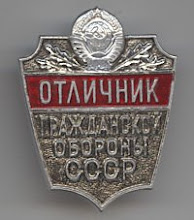Readers familiar with McCain's earlier rhetoric about Russia may find this surprising. He did, after all, say awhile ago that Russia should be kicked out of the G8. This is inconsistent, and my hope is that it signals some moderation in McCain's stance on Russia. One would certainly expect so, given that one of the things McCain is proposing is a repository in Siberia for foreign spent nuclear fuel. As he stated in his speech:
I would seek to establish an international repository for spent nuclear fuel that could collect and safely store materials overseas that might otherwise be reprocessed to acquire bomb-grade materials. It is even possible that such an international center could make it unnecessary to open the proposed spent nuclear fuel storage facility at Yucca Mountain in Nevada.
The location of this facility was only clarified by one of his advisors:
Randy Scheunemann, a senior foreign policy and national security advisor to the McCain campaign, said later that the repository could be in Siberia and that if there were sufficient security guarantees, McCain had a "willingness to entertain possibility ... that we could possibly send some of our spent fuel there."
However convenient this might be for American politicians, it is not something that the Russians are likely to agree to. The enthusiasm of the Russian government for providing spent nuclear fuel storage has waned in recent years as their economy has boomed. The concept is unpopular with the Russian public, who are tolerant of the idea of offering reprocessing services but not of becoming "the world's nuclear waste dump." At the same time, international cooperation on monitoring the nuclear fuel cycle is important, so any step towards working closer with the Russians could be interpreted as a good thing.
In any case, the real proliferation danger is associated with the front end of the fuel cycle. McCain's solution to this is reminiscent of internationalization schemes from Atoms for Peace to GNEP:
The most effective way to prevent this deception is to limit the further spread of enrichment and reprocessing. To persuade countries to forego enrichment and reprocessing, I would support international guarantees of nuclear fuel supply to countries that renounce enrichment and reprocessing, as well as the establishment of multinational nuclear enrichment centers in which they can participate. Nations that seek nuclear fuel for legitimate civilian purposes will be able to acquire what they need under international supervision. This is one suggestion Russia and others have made to Iran.
It is interesting that McCain seems to be implicitly endorsing Russia's scheme for Bushehr: allowing the Iranians to possess the VVER-1000 reactor but making them dependent on foreign (i.e., Russian) fuel suppliers. This is in marked contrast to many Congressional critics of Russia's nuclear export policies, who are threatening to block the 123 agreement over Bushehr.
While a fair amount of what McCain proposed in the speech is no more than a pipe dream, on the whole it marks an enormous improvement over the policies of the current administration in several areas, particularly the need for real arms control negotiations with Russia. As such, I'm heartened by it. As Obama has also emphasized the need for such negotiations, there's reason to hope that there will be new arms control efforts irrespective of who wins the election this fall.

